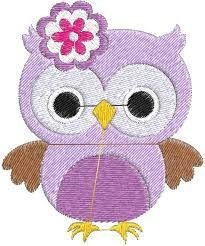Monogram embroidery adds a personalized touch to a wide range of items, from towels to jackets. If you’re looking to elevate your embroidery projects, Embroidery Digitizing services can play a crucial role in achieving professional results. In this guide, we’ll walk you through the step-by-step process of creating beautiful monograms with the help of these services. Whether you’re a beginner or an experienced embroiderer, this guide will help you navigate the intricacies of monogram embroidery.
Choosing the Right Materials and Tools
Selecting the right materials and tools is crucial for achieving high-quality monogram embroidery. For fabric, opt for durable options like cotton, linen, or canvas. High-quality embroidery thread, such as polyester or rayon, provides the best sheen and strength. Match your thread and fabric weight with appropriate embroidery needles, usually size 75/11 or 80/12. A sturdy embroidery hoop keeps your fabric taut for precise stitching, while a stabilizer prevents fabric distortion. Choose between tear-away, cut-away, or wash-away stabilizers based on your fabric and design complexity.
Understanding Embroidery Digitizing Services
Embroidery Digitizing services are essential for converting your monogram designs into a format that your embroidery machine can read. These services transform images or text into a digital embroidery file using specialized software.
Digitizing involves creating a digital representation of your monogram that includes stitch types, directions, and colors. This process ensures your embroidery machine executes the design accurately.
When selecting an Embroidery Digitizing service, consider factors such as turnaround time, cost, and customer reviews. Look for services that provide high-quality digitized files tailored to your machine’s specifications.
Clearly communicate your design preferences, including font style, size, and placement, to the digitizing service. Provide any specific requirements, such as stitch density or thread color changes.
Designing Your Monogram
Designing your monogram involves choosing a font and layout that matches your aesthetic.
– Font Selection: Opt for fonts that complement the item. Script fonts provide elegance, while block fonts offer a modern vibe. Match the font with the fabric’s texture and thickness for the best result.
– Monogram Layout: Decide on the arrangement of initials. Traditional layouts feature the last name initial in the center, but you can explore two-letter or stacked layouts for a unique twist.
– Size and Placement: Select a suitable monogram size based on the item’s use. Use a ruler or template to mark the precise placement on the fabric.
Preparing Your Fabric and Setting up Your Machine
Proper preparation ensures a smooth embroidery process and helps achieve a professional finish. Pre-wash your fabric to prevent shrinking and iron out any wrinkles. Apply the stabilizer to the back of the fabric, ensuring it covers the entire monogram area. Secure the fabric in the embroidery hoop, making sure it is taut and centered but not stretched. Load the digitized monogram file onto your embroidery machine and attach the appropriate hoop size. Thread the machine with your selected embroidery thread. Conduct a test stitch on a scrap piece of fabric to check for thread tension and alignment issues. Once satisfied, position the hooped fabric under the needle and start embroidering, monitoring the process closely for any adjustments needed.
Embroidering the Monogram
With your fabric secured and your machine set up, begin the monogram embroidery process. Start by conducting a test stitch on a scrap piece of fabric to verify that the design matches your expectations and to adjust any thread tension or alignment issues. Place the hooped fabric under the machine’s needle, ensuring that the placement aligns with your intended design. As the machine embroiders, closely monitor the process, especially during thread color changes or intricate sections. This vigilance allows you to promptly address any potential problems, such as thread breaks or misalignment. Keep an eye on the overall progress and make necessary adjustments to ensure a smooth and precise outcome.
Finishing Touches and Care Tips
After completing your monogram, add those essential finishing touches to elevate your project’s final look and durability.
- Remove Stabilizer: Carefully eliminate the stabilizer from the back of the fabric using scissors for cut-away types or water for wash-away options.
- Trim Threads: Employ small, sharp scissors to snip any loose threads or jump stitches, ensuring a clean and professional appearance.
- Press the Fabric: Gently press the embroidered area with a pressing cloth to protect the stitches. This helps to set the stitches and maintain their shape without flattening them.
- Care Tips: To prolong the life of your monogrammed item, turn it inside out before washing on a gentle cycle. Opt for air drying instead of using a dryer to prevent damage. Steer clear of bleach and harsh detergents to maintain the vibrancy and integrity of the embroidery.
Conclusion
Creating monogram embroidery with the assistance of Embroidery Digitizing services opens up a world of possibilities for personalizing and professionalizing your projects. By integrating digital precision with your creative flair, you can achieve results that are both intricate and consistent.
play a pivotal role in this process, converting your designs into machine-readable formats that ensure accuracy and quality. This allows you to focus on the artistic aspects of your work, confident that the technical details are expertly handled.
As you embark on your monogram embroidery journey, remember the importance of selecting the right materials and tools, as outlined earlier. The fabric, thread, needle, and stabilizer all contribute to the final outcome, so choose wisely to enhance the durability and appearance of your monogram.




